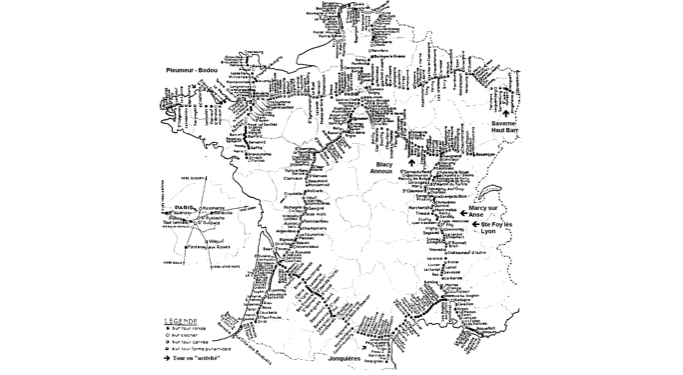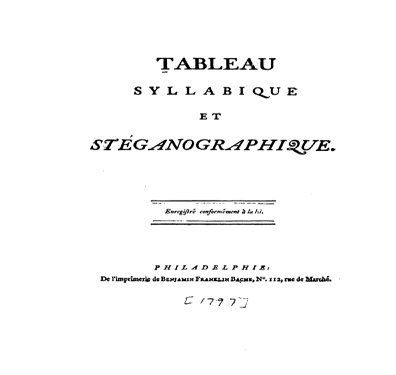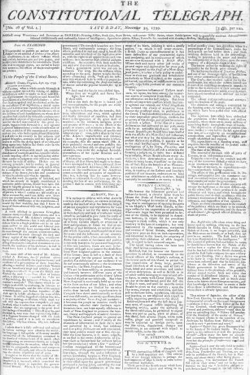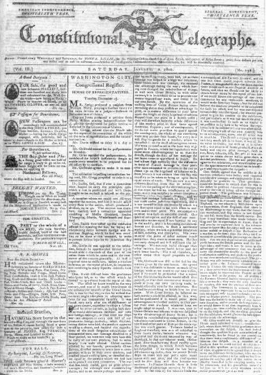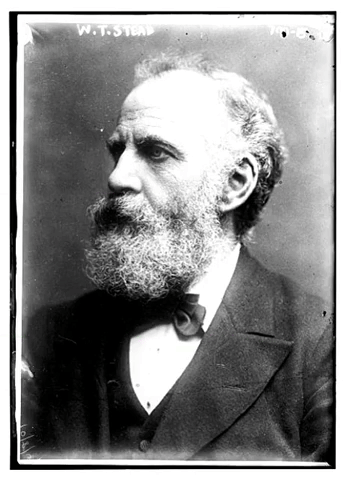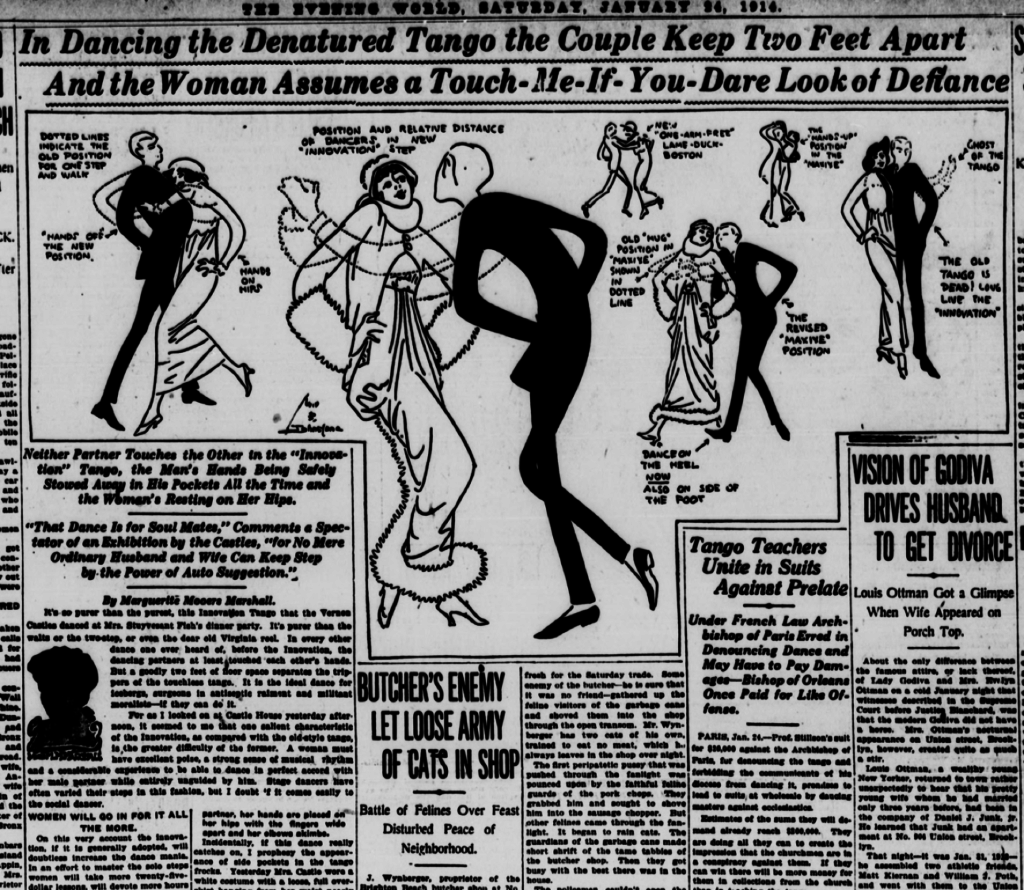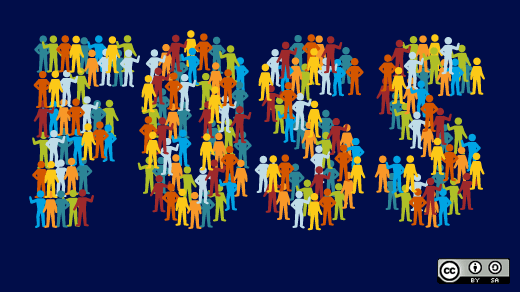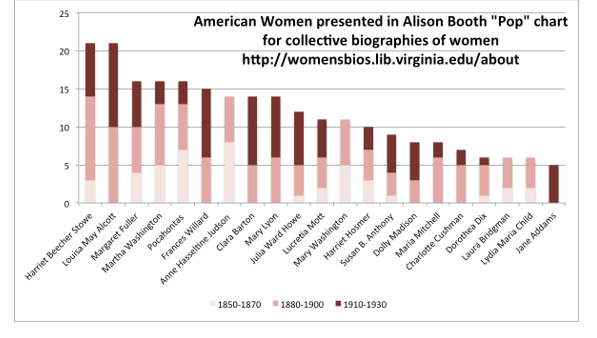Peter Pomerantsev, Nothing Is True and Everything Is Possible: The Surreal Heart of the New Russia (First edition, London: Faber & Faber, 2014. Revised edition, New York: PublicAffairs, 2015)
reviewed by Mark Lipovetsky
This essay has been peer-reviewed by the boundary 2 editorial collective.
Peter Pomerantsev’s book Nothing Is True and Everything Is Possible: Adventures in Modern Russia offers a chain of seemingly disparate but conceptually tied, stories – about the Kremlin ideologue Vladislav Surkov, the former “king maker” and oligarch Boris Berezovsky, post-soviet TV networks, Moscow night clubs, the suicides of top models’, new religious sects, the victims of business wars between different branches of power, former gangsters-cum-TV producers, Western expats, the Night Wolves (an organization of bikers which has become an avant-garde of Putin’s supporters), and many other truly exciting subjects. Through these stories, written with a sharp, sometimes satirical pen, Pomerantsev presents modern Russian as a specific type of cultural organism rather than a projection of Putin’s or anybody else’s political manipulations and propaganda.
Pomerantsev clearly rejects a stereotype shared by many contemporary political commentators but harkening back to Soviet times: a reduction of the entire society to the whims of its leaders (sometimes confronted only by a small group of brave and wise dissidents). Although Nothing Is True and Everything Is Possible portrays such “political technologists” as Surkov and depicts several figures of contemporary dissent, Pomerantsev clearly tries to deconstruct this cliche and deliver a much more complex vision. Notably, Putin is rarely mentioned in the book; he is designated simply as “the President,” which suggests that his personality is less important than his position within the system.
Pomerantsev’s book methodically dismantles the myth about “the return of the Soviet” in recent years – the myth shared by many, within and outside Russia alike. While demonstrating the continuity between the late Soviet modus vivendi, the political compromises of the 1990s, and today’s radical changes, Pomerantsev consistently argues that we have to deal with a completely new kind of the political discourse, within which recognizably Soviet elements play a very different role and disguise rather than reveal what is actually happening.
The third widespread stereotype that is splendidly absent in Pomerantsev’s book is the discourse on “the Russians’ love of the strong hand,” Russia’s innate gravitation to authoritarian regimes and leaders, and, most notoriously the alleged lack of a democratic tradition in Russia. Unlike numerous publications about contemporary Russia, these Orientalizing and profoundly essentialist labels never appear in Nothing Is True and Everything Is Possible.[1] For Pomerantsev, Russia is not a backwards and isolated player looking up at the perfect Western world; on the contrary, his book directly leads to an opposite conclusion: “Today’s Kremlin might perhaps be best viewed as an avant-garde of malevolent globalization. The methods it pursues will be taken up by others, and […] the West has no institutional or analytical tools to deal with it” (Pomerantsev and Weiss 2015, 7).
This quotation is borrowed from a special report, “The Menace of Unreality: How the Kremlin Weaponizes Information, Culture and Money,” written by Pomerantsev together with Michael Weiss for Mikhail Khodorkovsky’s Institute of Modern Russia. The authors of the report ask: “How does one fight a system that embraces Tupac and Instagram but compares Obama to a monkey and deems the Internet a CIA invention? That censors online information but provides a happy platform to the founder of WikiLeaks, a self-styled purveyor of total ‘transparency’? That purports to disdain corporate greed and celebrates Occupy Wall Street while presiding over an economy as corrupt as Nigeria’s? That casts an Anschluss of a neighboring country using the grammar of both blood-and-soil nationalism and anti-fascism?” (Pomerantsev and Weiss 2015, 5).
The report works with ideas which have been brewing in Nothing Is True and Everything Is Possible. Yet, this lively and observant book is less about politics per se, and more about culture as an effective form of politics. The reader of Pomerantsev’s book eventually cannot help but realize that Russia’s political turns and twists are born in night clubs and at parties, rather than in Kremlin offices, that “the President,” despite his unconcealed hatred for western-style democracy, is indeed truly democratic, since his thoughts and acts are synchronized with the desires of the majority of the Russian people (many of his supporters are well-educated, well-travelled representatives of the newly-born middle class); that in a society dependent on TV broadcasting – and the Russia depicted in the book is exactly such a society –the distance between the cultural and political phenomena is minimal, if existing at all. Although the first edition of the book appeared before Russia’s political turn of 2014, Pomerantsev only had to add a few pages to the 2015 version to reflect the new political reality after the annexation of Crimea. These pages do not stand out but look quite natural, since in the main body of Nothing Is True… Pomerantsev managed to pinpoint exactly those processes and tendencies that made the insanity possible.
Freedom from stereotypes coupled with Pomerantsev’s spectacular ability to present complex ideas through vivid snapshots, makes his book fertile ground for the discussion of much broader subjects. First and foremost, Nothing Is True and Everything Is Possible raises questions about the role of cynicism in Soviet and post-Soviet culture and politics, as well as about the relation between cynicism, authoritarianism and postmodernism in both the Russian and global contexts. I will try to present a “dialogical” reading of Pomerantsev’s book, sometimes problematizing its concepts, sometimes expanding on them, sometimes applying them to the material beyond the book’s content. It is a truly rare occasion when a journalistic reportage provokes historical and theoretical questions, which proves that Nothing Is True and Everything Is Possible is a phenomenon out of the ordinary.
“Reality Show Russia”
Petr Pomerantsev was born in Kiev in 1977. In 1978 his father, the well-known poet and journalist Igor’ Pomerantsev, emigrated with his family from the USSR and began working as a broadcaster, first at the BBC Radio Russian Service and from 1987 and until present at Radio Liberty. Pomerantsev Jr. recollects in his Newsweek article how he enjoyed playing in the hallways of the BBC Bush House in London (see Pomerantsev 2011a). The BBC Russian service was one of the most vibrant centers of anti-Soviet intellectual activity, so it is safe to assume (and the book confirms this impression) that the author of Nothing Is True and Everything Is Possible has absorbed the ethos of late Soviet dissidents. This ethos might have served as a repellent in Russia of the 2000s, a country enraptured with nostalgic myths about Soviet imperial might and the stability of the Brezhnev era along with growing demonization of the Yeltsin period of democratic reforms, which strangely resonated with the rapidly increasing number of former and current officers of FSB (the KGB successor) taking up prestigious political, economic and media offices…
In 2001, after graduating from Edinburgh University and some job experience at British TV, Pomerantsev decides to try himself in Russia – where he stays until 2010, working as a producer at the popular Russian entertainment TV channel TNT. Stays, because, as he explains, Moscow in these years “was full of vitality and madness and incredibly exciting”; it was “a place to be” (Castle 2015). Along with the increasing monopolization of political, economic, and media power in the hands of the FSB-centered clique, the 2000s was a period of a noticeable economic growth, when Russia’s cities became cleaner and safer, when ordinary people started to travel abroad on a regular basis, when one could hardly find a Russian-made car within a thick stream of urban vehicles, when restaurants flourished, book sales were on the rise and theatres were full every night … In short, when the economic reforms of the accursed Yeltsin years in combination with the skyrocketing oil and gas prices stated to bring long-awaited fruits (see Iasin 2005).
While in Moscow Pomerantsev produced reality shows, documentaries, and generally had to bring the “western” style to the “news-free” – i.e., supposedly apolitical – broadcasts of the TNT channel. Nothing Is True and Everything Is Possible is in many ways a memoir about these years on Russian TV. The reality show was one of the genres Pomerantsev produced, so the metaphor of Russian politics as a reality show holds a central places in his book; the first part of the book is entitled: “Reality Show Russia”.
One of Pomerantsev’s first discoveries associated with these – relatively free and diverse – years, concerns the blurring of the borderline between fact and fiction, between a staged show and the news, especially on the Russian national channels united by the term “Ostankino” (the major TV studio in Moscow). As a TV news anchor from Ostankino explained to him, a young foreigner, speaking fluent Russian and working on Russian TV: “Politics has got to feel like … like a movie!” (6)[2]. Pomeranstev’s explains how this motto works in practice: “… the new Kremlin won’t make the same mistake the old Soviet Union did: it will never let TV become dull… Twenty-first century Ostankino mixes show business and propaganda, ratings with authoritarianism […] Sitting in that smoky room, I had the sense that reality was somehow malleable, that I was with Prospero who could project any existence they wanted onto post-Soviet Russia” (7). However, his own career on a Russian entertainment channel serves as an illuminating example of the limits of “Prospero”’s power. Pomerantsev describes how he had been producing a reality show about people meeting and losing each other at the airport. Intentionally, he tried to avoid staged and scripted situations, seeking interesting characters and stories instead of sentimental effects. The result was quite predictable: “The ratings for Hello-Goodbye had sucked. Part of the problem was that the audience wouldn’t believe the stories in the show were real. After so many years of fake reality, it was hard to convince them this was genuine” (73). Furthermore, when Pomerantsev made several documentaries addressing societal conflicts and problems, they all were rejected by the channel on the premise that its viewers did not want to see anything negative.
Yet, this is only half of the picture. In the second half of the book, Pomerantsev describes how he received a very tempting invitation to the federal First Channel. The head of programming, the best-selling author of self-help books (this is an important detail in the context of the book) offered him the chance “to helm a historical drama-documentary… With a real, big, mini-movie budget for actors and reconstructions and set designers… The sort of thing you make when you’re right at the top of the TV tree in the West…” (226). And the story was great: “about a Second World War admiral who defied Stalin’s orders and started the attack on the Germans, while the Kremlin was still in denial about Hitler’s intentions and hoped for peace. The admiral was later purged and largely forgotten. It’s a good story. It’s a really good story. It’s a dream project” (227). Most importantly, it was a true story that obviously defied the newly-rediscovered admiration for Stalin’s politics in Russia’s public and media discourse (these days Putin even speaks highly about the Molotov-Ribbentrop pact). Yet, eventually Pomerantsev decided to decline this generous offer: “… I realise that though my film might be clean, it could easily be put next to some Second World War hymn praising Stalin and the President as his newest incarnation. Would my film be the ‘good’ programme that validates everything I don’t want to be a part of? The one that wins trust, for that trust to be manipulated in the next moment?” (231). In other words: “In a world that really has been turned on its head, truth is a moment of falsehood,” as Guy Debord writes in The Society of the Spectacle (1995, 14).
This is a very important realization, not only as the turning point in Pomerantsev’s Russian odyssey, but also as an insight into the logic of the Russian “society of spectacle”, itself resonant with Baudrillard’s almost forgotten concept of the “hyperreality of simulacra”. What seemed to be an almost grotesque philosophic hyperbole, appears to be Pomerantsev’s and his colleagues’ practical experience in Nothing Is True and Everything Is Possible. As follows from this experience, the capitalist society of the spectacle, unlike Debord’s conceptualization, is not opposed to the communist social order but directly grows from it. Post-Soviet TV viewers remember and even nostalgically long for Soviet media where ideological images constantly produced their own spectacle, perhaps not as attractive as the capitalist one, but still capable of fulfilling its main function: “By means of spectacle the ruling order discourses endlessly upon itself in an uninterrupted monologue of self-praise” (Debord 1995, 19). As to the “hyperreality of simulacra”, it appears in Pomerantsev’s book not only as a result of capitalist market forces (images that sell better, dominate), but as a horizon in which public demand for captivating (or entertaining, or horrifying) images and the political and economic interests of the ruling elite meet and happily fuse with each other. As follows from Nothing Is True…, the “hyperreality of simulacra” in its totality can be most successfully achieved not by capitalism alone, but by the blend of capitalism with post-soviet authoritarianism, accomplished through the homogenization of the information flow.
Back in the early 2000s, the prominent Russian sociologists Lev Gudkov and Boris Dubin, defined Russian society as “the society of TV viewers”. The society of TV-viewers had formed on the ruins of Soviet ideocracy, i.e. the society with a single official ideology which served either as an ally or as an opponent to multiple others non-official ones. In this new cultural realm. political doctrines were replaced by entertainment which seemed to be apolitical, yet, (surprise, surprise!) were quite political indeed. For example, in the 2000s appeared numerous TV series about heroic, charming and, yes, suffering officers of the Cheka/NKVD/KGB: they were entertaining and even captivating, but eventually they have produced the figure of the representative of this organization as the epitome of the national destiny – who defends the motherland, takes the hit from his (always his!) native organization, successfully overcomes the difficulties (temporary of courses) and triumphs over enemies (see Lipovetsky 2014). In the scholars’ opinion, the mass dependence of Russian society on TV images signified the process opposite to the formation of the civil society: “Today’s social process of Russian ‘massovization’… is directed against differentiation and relies on the most conservative groups of the society” (Gudkov and Dubin 2001, 44). The scholars argued that while promoting negative identification – through the figures of enemies and demonized “others”— television offered uplifting “participatory rituals of power” that substituted for actual politics while feeding the longing for national grandeur, heroic history and symbolic superiority.
However, in the 1990s, the post-Soviet mediaspace was a battlefield of various competing discourses – liberal, neo-liberal, nationalist, nostalgic, statists, libertarian, etc. During the 2000s-2010s the full spectrum of these discourses gradually narrowed down toward cultural neo-traditionalism and political neo-conservatism (focalized on lost imperial glory, “Russia raising itself from its knees”, collapse of the USSR as “the greatest geopolitical catastrophe of the century”, etc.). Pomerantsev observes the completion of this process in the TV-orchestrated nationalist mass hysteria accompanying the Crimean affair and invasion of Ukraine in 2014: “… the Kremlin has finally mastered the art of fusing reality TV and authoritarianism to keep the great 140-million strong population entertained, distracted, constantly exposed to geopolitical nightmare that if repeated enough times can become infectious” (273)
Without any competing media (no more than 5% of the Russian population gets its news from internet), the homogenized narrative of post-Soviet TV not only shapes the opinions of the vast majority of Russian population – the notorious 85% that (allegedly) wholeheartedly support all of Putin’s initiatives. The TV narrative becomes an ultimate reality symbolically superseding immediate everyday experience. In other words, the television offers neither a simulation of reality, nor a distortion of truth, but a parallel, and more real, world.
Baudrillard wrote about “the desert of the real” (Natoli and Hutcheon 1993, 343), indicating that his hyperreality of simulacra was inseparable from the “metaphysical despair” evoked by “the idea that images concealed nothing at all” (345). On the contrary, Pomerantsev’s non-fictional characters, TV producers and “political technologists” feel no despair whatsoever, rather they enjoy their power over the “real” and celebrate the disappearance and malleability of any and all imaginable truth. In the formulation of Gleb Pavlovsky, a Soviet-time dissident, who became a leading “political technologist” of “the Putin system” (although eventually he was expelled from the circle of the Kremlin viziers): “The main difference between propaganda in the USSR and the new Russia […] is that in Soviet times the concept of truth was important. Even if they were lying they took care to prove what they were doing was ‘the truth.’ Now no one even tries proving the ‘truth.’ You can just say anything. Create realities” (Pomerantsev and Weiss 2015, 9).
At the same time, as one can see from the example with the offer received by Pomerantsev from the Ostankino boss, this system recognizes truth and even effectively employs discourses that might be uncomfortable for the dominant ideology. Yet, here these elements of credibility are instrumentalized as mere means for the performance of reality, a performance that neither its producers nor its consumers seem to judge by its truthfulness. Here, some other criteria matter more. In the post-Soviet hyperreality of simulacra truth is triumphantly defied; it has been openly manipulated through the process of constant constructions, negations, and reconstruction in front of the viewer’s eyes. This is why emphasis falls onto the flamboyance and virtuosity of the (reality) performance, be it the Olympics or the public burning of tons of imported cheese from countries sanctioning Russia. This may be the Achilles heel of contemporary Russian politics. If performance supersedes reality, then invisible economic sanctions on Russian leadership are much less painful than a boycott of, say, the Football World Championship of 2018.
“Postmodern Dictatorship”?
Curiously, the vision of the malleable TV-dominated- reality in Pomerantsev’s book deeply resonates with Generation ‘P’ (Homo Zapiens in American version, Babylon in British) by Viktor Pelevin, one of the most famous Russian postmodernist novels, published in 1999. The novel appeared before Putin was known to the broad public, and was initially perceived as a summation of the Yeltsin period. Yet, it proved to be an prescient account of the ideological shifts in Putin’s decade. Even on a surface level, the novel presents a shrewd political forecast for the 2000s. In Generation P, a graduate from the Literary Institute trained to translate poetry from languages he does not know, a character without features but with a “pile of cynicism,” Vavilen Tatarsky, becomes a copywriter, first for commercial advertisements, later for political ones, eventually rising from mediocrity to become the supreme ruler of the media, the living god secretly ruling post-Soviet Russia. This plotline retroactively reads as a parody of Vladimir Putin’s ascent to the role of the “national leader”. With an uncanny acuity of foresight, Pelevin imagines the transformation of a non-entity into the “face of the nation”, in a diapason from the elimination of the “well-known businessman and political figure Boris Berezovsky” (2002, 249) – another character of Nothing Is True and Everything Is Possible — to a new cultural mainstream instigating nationalist nostalgia for the Soviet empire and novel and familiar forms of class hatred. Pelevin even anticipated Russia’s newly-found desire to lead the reactionaries of the world (Pomerantsev and Weiss write about this in their memorandum)– in his commercial for Coca Cola Tatarsky appears as the frontrunner for the “congress of radical fundamentalists from all of the world’s major confessions” (2002, 249).
In Generation P, a gangster commissions Vavilen to produce a Russian national idea: “Write me a Russian idea about five pages long. And a short version one page long. And lay it out like real life, without any fancy gibberish […] So’s they won’t think all we’ve done in Russia is heist the money and put up a steel door. So’s they can feel the same kind of spirit like in ’45 at Stalingrad, you get me?” (Pelevin 2002, 138) This request, albeit expressed in slightly different terms punctuates a wide spectrum of cultural debates about the national idea in Russia of the 1990s and 2000s, reflected in Pomerantsev’s book as well. However, when asked in 2008 if Russia had found its national idea in Putin, Pelevin responded affirmatively: “That’s precisely what Putin is” (Rotkirch 2008, 82). Following this logic, one may argue that although Vavilen failed to accomplish the task assigned him, his creator did not. Like Putin, Vavilen is a manifestation of Russia’s new national idea. He just isn’t sure what that truly is, since it is hyperreal and he himself created it.
But let us pause for a second and ask whether the fusion of postmodernism and authoritarianism is possible at all? For Pomerantsev they are compatible. He respectfully cites the Russian oligarch Oleg Deripaska saying: “This isn’t a country in transition but some sort of postmodern dictatorship that uses the language and institutions of democratic capitalism for authoritarian elites” (50). In 2011, Pomerantsev published in The London Review of Books the article “Putin’s Rasputin” that now reads as a seed from which the book was born (slightly altered, this text would be included into Nothing Is True…). The article describes Vladislav Surkov, a former deputy head of the President’s administration, Putin’s aid and vice-premier, the inventor of the concept of Russian “sovereign democracy” and builder of the United Russia Party; currently one of the chief coordinators of both the “hybrid war” in Ukraine and its orchestrated representation in the Russian media. In Surkov, who is also known as a novelist and song-writer, Pomerantsev sees (with good reason) the main designer of contemporary Russia’s political and societal system. Surkov, he contends, has fused authoritarianism with postmodernism, creating a completely new political system, which Pomerantsev tentatively defines as “postmodern authoritarianism”:
Newly translated postmodernist texts give philosophical weight to the Surkovian power model. [Jean-] François Lyotard, the French theoretician of postmodernism, began to be translated in Russia only towards the end of the 1990s, at exactly the time Surkov joined the government. The author of Almost Zero [a postmodernist novel allegedly written by Surkov] loves to invoke such Lyotardian concepts as the breakdown of grand cultural narratives and the fragmentation of truth: ideas that still sound quite fresh in Russia. […] In an echo of socialism’s fate in the early 20th century, Russia has adopted a fashionable, supposedly liberational Western intellectual movement and transformed it into an instrument of oppression. (Pomerantsev 2011)
This description continues in the book:
Surkov likes to invoke the new postmodern texts just translated into Russian, the breakdown of grand narratives, the impossibility of truth, how everything is only ‘simulacrum’ and ‘simulacra’… and then in the next moment he says how he despises relativism and lives conservatism, before quoting Allen Ginsberg’s ‘Sunflower Sutra’ in English and by heart […] Surkov’s genius has been to tear those associations apart, to marry authoritarianism and modern art, to use the language of rights and representation to validate tyranny, to recut and paste democratic capitalism until it means the reverse of its original purpose. (87-88)
Although, this way of reasoning seems to be a little naïve (one man’s cultural convictions cannot be directly reproduced by the entire country or just Moscow) the question remains: how can one so easily marry postmodernism and authoritarianism? Similarities between what Pomerantsev depicts in his non-fiction and postmodernist theoretical models, as well as Russian postmodernist fiction are too obvious to be ignored.
It should be noted that Russian postmodernism has been radically different from the model described by Fredric Jameson as the “cultural logic of late capitalism”. Although participants of late Soviet underground culture, had very fragmented, if any knowledge of Western theory, their works embodied Lyotarian “incredulity towards grand narratives” in scandalously transgressive and liberating forms of the counterculture, which had been subverting both Soviet official and intelligentsia’s hegemonies (see in more detail Lipovetsky 1999, 2008). Although acknowledged in the 1990s, postmodernist writers and artists like Dmitrii Prigov, Vladimir Sorokin, Lev Rubinshtein and their colleagues by underground circles by and large, have preserved their critical position towards neo-traditionalist and neo-conservative ideologies and cultural trends.
Notably, Vladimir Sorokin in 2006 wrote a postmodernist dystopian novel The Day of the Oprichinik (translated into English in 2011), in which, as readers and critics admit almost unanimously, predicted, outlined and exaggerated the actual features of the grotesque political climate of the 2010s. Lev Rubinshtein, the experimental poet famous for “the index cards poetry”, in the 2000s has become one of the most brilliant and influential political essayist of the anti-Putin camp. Dmitrii Prigov, one of the founding fathers of Moscow Conceptualism, also published political columns critical of the new conformism and nostalgia for the lost grand narratives. Most importantly, he has directly influenced protest art of the new generation: before his untimely death in 2007 he collaborated with the group Voina (War) famous for its radical political performances. The founder of Voina, Oleg Vorotnikov, called Prigov the inspiration for the group’s creation and activities, and the former member of Voina and spokesperson for Pussy Riot, Nadezhda Tolokonnikova, repeatedly mentions Prigov as a deep influence, exposing her to contemporary, i.e., postmodernist, art and culture (see, for example, Volchek 2012).
Although Pomerantsev does not write about these figures (he only briefly mentions Voina’s actions and “the great tricksters of the Monstration movement”[149]), it is with apparent tenderness that he describes the conceptualist artist Vladislav Mamyshev-Monro whose impersonations of various cultural and political celebrities, including “the President”, were at first perceived as a part of the culture of simulation but turned out to be its subversion incompatible with the new political freeze: “Vladik himself was dead. He was found floating in a pool in Bali. Death by heart attack. Right at the end an oligarch acquaintance had made him an offer to come over to the Kremlin side and star in a series of paintings in which he would dress up and appear in a photo shoot that portrayed the new protest leaders sodomizing. Vladik had refused” (278).
These examples, although admittedly brief, nevertheless complicate and problematize the picture of “postmodern dictatorship” painted by Pomerantsev. Minimally, they testify to the fact that postmodernism hosts dissimilar and even conflicting organisms, that postmodernist culture since the 1980s has been evolving in various directions, some of which lead to Surkov while others lead to Pussy Riot. An informative parallel might be made to Boris Groys’s conceptualization of Stalinism and its cultural manifestation Socialist Realism. In The Total Art of Stalinism (original title: Gesamtkunstwerk Stalin) Groys argued that Stalinism adopted avant-garde aesthetic methods and substituted the avant-gardist demiurge with the state (and Stalin as its personification): “… Socialist realism candidly formulates the principle and strategy of its mimesis: although it advocates a strictly ‘objective’, ‘adequate’ rendering of external reality, at the same time it stages or produces this reality. More precisely, it takes reality that has already been produced by Stalin and the party, thereby shifting the creative act onto reality itself, just as the avant-garde had demanded” (1992, 55). Groys’s argument has been criticized by historians of Socialist Realism pointing to the antagonism between Socialist Realism and the avant-garde and its reliance on much more populist and traditionalist discourses (see for example, Dobrenko 1997). However, the very logic of the transformation of a liberatory aesthetics into sociocultural authoritarianism seems to be relevant to contemporary Russia. Despite Benjamin’s maxim, politics has been aestheticized since ancient times, but when the state acts as an artist, repression becomes inevitable.
Although historical parallels can help to contour the phenomenon, by default they are never accurate. This is why, I believe that in the cultural situation described by Pomerantsev, we are dealing with something different: with the postmodernist redressing of a far more long-standing cultural and political phenomenon, which tends to change clothing every new epoch, and Nothing Is True… excels in describing its current Russian outfit.
From the History of Cynicism
Throughout his entire book, using very dissimilar examples, Pomerantsev demonstrates the functioning of one and the same cultural (political/social/psychological) mechanism: the coexistence of mutually exclusive ideologies/beliefs/discourses in one and the same mind/space/institution. More accurately, it is not their co-existence, but the painless and almost artistic shifting from one side to the opposite; a process which never stops and is never is reflected upon as a problem.
Consider just a few examples from Nothing Is True:
About Moscow’s new architecture: “A new office center on the other side of the river from the Kremlin starts with a Roman portico, then morphs into medieval ramparts with spikes and gold-glass reflective windows, all topped with turrets and Stalin-era spires. The effect is at first amusing, then disturbing. It’s like talking to the victim of a multiple personality disorder.” (124).
About politics of “a new type of authoritarianism”: “The Kremlin’s idea is to own all forms of political discourse, to not let any independent movement develop outside its walls. Its Moscow can feel like an oligarchy in the morning and a democracy in the afternoon, a monarchy for dinner and a totalitarian state by bedtime” (79).
About new “spiritual gurus”: “Surkov had gathered together all political models to create a grand pastiche, or Moscow’s architecture tried to fill all styles of buildings onto one, Vissarion [a popular new “prophet”] had created a collage of all religions” (210)
About media producers:
The producers who work at the Ostankino channels might all be liberals in the private lives, holiday in Tuscany, and be completely European in their tastes. When I ask how they marry their professional and personal lives, they look at me as if I were a fool and answer: ‘Over the last twenty years we’ve lived through a communism, we never believed in, democracy and defaults and mafia state and oligarchy, and we’ve realized they are illusions, that everything is PR.’ ‘Everything is PR’ has become the favorite phrase of the new Russia; my Moscow peers are filled with a sense that they are both cynical and enlightened. […] ‘Can’t you see your own governments are just as bad as ours?’ they ask me. I try to protest – but they just smile and pity me. To believe in something and stand by it in this world is derided, the ability to be a shape-shifter celebrated… conformism raised to the level of aesthetic act. (87)
And once again about them:
For when I talk to many of my old colleagues who are still working in the ranks of Russian media or in state corporations, they might laugh off all the Holy Russia stuff as so much PR (because everything is PR!), but their triumphant cynicism in turn means they can be made to feel there are conspiracies everywhere; because if nothing is true and all motives are corrupt and no one is to be trusted, doesn’t it mean that some dark hand must be behind everything? (273)
About social psychology:
Before I used to think the two worlds were in conflict, but the truth is a symbiosis. It’s almost as if you are encouraged to have one identity one moment and the opposite one the next. So you’re always split into little bits, and can never quite commit to changing things […] But there is great comfort in these splits too: you can leave all your guilt with your ‘public’ self. That wasn’t you stealing that budget/making that propaganda show/bending your knee to the President, just a role you were playing: you’re a good person really. It’s not much about denial. It’s not even about suppressing dark secrets. You can see everything you do, all your sins. You just reorganize your emotional life so as not to care. (234)
Indeed, “conformism raised to the level of aesthetic act” is a great definition of cynicism. Furthermore, the post-Soviet complex illuminated by Pomerantsev, deeply resonates with a brilliant description of the modern cynic from Peter Sloterdijk’s famous book Critique of Cynical Reason:
… the present-day servant of the system can very well do with the right hand what the left hand never allowed. By day, colonizer, at night, colonized; by occupation, valorizer and administrator, during leisure time, valorized and administered; officially a cynical functionary, privately a sensitive soul; at office a giver of orders, ideologically a discussant; outwardly a follower of the reality principle, inwardly a subject oriented towards pleasure; functionally an agent of capital, intentionally a democrat; with respect to the system a functionary of reification, with respect to Lebenswelt (lifeworld), someone who achieves self-realization; objectively a strategist of destruction, subjectively a pacifist; basically someone who triggers catastrophes, in one’s own view, innocence personified <…> This mixture is our moral status quo.’ (1987, 113)
Obviously, there is nothing specifically post-Soviet in this description. According to Sloterdijk, “a universal diffuse cynicism” (1987, 3) is the widespread cultural response to the heavy burden of modernity. He defines cynicism as “enlightened false consciousness” as opposed to Marx’s famous definition of ideology. Sloterdijk argues that cynicism offers the modern subject a strategy of pseudo-socialization to reconcile individual interest with social demands by the splitting their personality into unstable and equally false and authentic social masks. The constant switching of these masks is the strategy of cynical accommodation to modernity. There is nothing specifically postmodern in this strategy either. Sloterdijk traces a genealogy of cynicism from ancient Greece to the twentieth century.
However, he almost completely excludes the Soviet experience from his “cabinet of cynics.” Slavoj Zizek, probably, was the first to apply Sloterdijk’s concept to Stalinism. In The Plague of Fantasies he argued that the Stalinist henchmen far exceeded the cynicism of their Nazi colleagues, “The paranoiac Nazis really believed in the Jewish conspiracy, while the perverted Stalinists actively organized/ invented ‘counterrevolutionary conspiracies’ as a pre-emptive strikes. The greatest surprise for the Stalinist investigator was to discover that the subject accused of being a German or American spy really was a spy: in Stalinism proper, confessions counted only as far as they were false and extorted … “(1997, 58). And in the book Did Somebody Say Totalitarianism? even in more detail he argued that in the Soviet political system “a cynical attitude towards the official ideology was what the regime really wanted – the greatest catastrophe for the regime would have been for its own ideology to be taken seriously, and realized by its subjects.” (2001, 92).
On the other hand, as historians of Soviet civilization have demonstrated, the authorities’ cynicism generated matching cynical methods of adaptation among ordinary Soviet citizens, the “broad masses” and intelligentsia alike (although, of course, it would be wrong to generalize and imagine all Soviet people as seasoned cynics). Oleg Kharkhordin in his The Collective and the Individual in Russia: A Study of Practices, which deals with the Soviet purges and the origins of the Soviet subjectivity writes about the results of this process: “Their double-faced life is not a painful split forced upon their heretofore unitary self; on the contrary, this split is normal for them because they originate as individuals by the means of split. […] One of the steps in this long development was individual perfection of the mechanism for constant switching between the intimate and the official, a curious kind of unofficial self-training, a process that comes later that the initial stage of dissimilation conceived as ‘closing off’ (pritvorstvo) and one that we may more aptly call dissimilation as ‘changing faces’ (litsemerie) – and, we might add, as its summation – cynicism” (1998, 275, 278). In her book Tear off the Masks! Identity and Imposture in Twentieth Century Russia, Sheila Fitzpatrick, the well-known social historian of Stalinism makes no reference to Sloterdijk, but uses many documents from the 1920s and 1930s to demonstrate the constantly shifting logic of class discrimination and how it compelled the average person to manipulate their own identity, Sloterdijk-style, rewriting the autobiography and seeking a place in the official and unofficial systems of social relations.
The heyday of Soviet cynicism falls onto the post-Stalin period of late socialism when, according to Alexey Yurchak, the author of the seminal study Everything Was Forever, Until It Was No More: The Last Soviet Generation, ideological beliefs frayed into pure rituals, participation in which demonstrated one’s loyalty to the regime and secured social success without embodying true belief. Pomerantsev in his book directly establishes the link between the late Soviet cynicism and today’s cultural reality:
Whenever I ask my Russian bosses, the older TV producers and media types who run the system, what it was like growing up in the late Soviet Union, whether they believed in the communist ideology that surrounded them, they always laugh at me.
‘Don’t be silly,’ most answer.
‘So you were dissidents? You believed in finishing the USSR?”
‘No. It’s not like that. You just speak several languages at the same time. There’s like several you’s.’ (233-4)
Having recognized the genealogical connection between late Soviet cynicism and the present day triumph of cynicism of Russia’s elites, Pomerantsev offers the following diagnosis: “Seen from this perspective, the great drama of Russia is not the ‘transition’ between communism and capitalism, between one fervently held set of beliefs and another, but that during the final decades of the USSR no one believed in communism and yet carried on living as if they did, and now they can only create a society of simulations” (234).
It sounds very logical but a little too straightforward to be accurate. Besides, this logic fails to explain the internal shift that has resulted in the current state of affairs. What Pomerantsev disregards is the subversive power of cynicism, its insidiousness. In the late Soviet period, what may be defined as cynicism, or a cynical split in multiple I’s, was also responsible for numerous practices and discourses that Yurchak unites by the term “living vnye”:
… the meaning of this term, at least in many cases, is closer to a condition of being simultaneously inside and outside of some context” (2006, 128) – here the system of Soviet ideas, expectations, scenarios, etc. The system of “vnye” discourses and milieus, in the scholar’s opinion, explains the sudden collapse of the invincible Soviet system: “although the system’s collapse had been unimaginable before it began, it appeared unsurprising when it happened. (1)
Furthermore, Soviet culture, since the 1920s and until the 80s, has been creating a whole rogue’s gallery of attractive and winning cynics and non-conformists, brilliantly defeating the system. This cultural trope spectacularly manifested the “power of the powerless” to use Vaclav Havel’s famous formulation. Literary and cinematic works about such characters enjoyed cult status, while belonging to official and non-official culture alike, from personages like Ostap Bender from Ilf and Petrov’s diptych of satirical novels The Twelve Chairs (1928) and The Golden Calf (1932) – both the subjects of multiple films, and the suite of demons accompanying the Devil Woland in Mikhail Bulgakov’s famous novel The Master and Margarita (written mainly in the 1930s, first published in 1966) to the authors and characters of Russian postmodernism, including the aforementioned Moscow to the End of the Line with its philosophizing trickster in the center, to Dmitrii Prigov, who had been constructing his cultural personality as a trickster’s ploy, throughout his entire career.
In my book Charms of the Cynical Reason (Lipovetsky 2011), I argue that the figure of the trickster in Soviet culture played a dual role. On the one hand, s/he provided cultural legitimacy to Soviet cynicism, even lending it the aura of artistry. The cynical split- or multi-personality may have been essential to survive and endure enforced participation in the grey economy and society. But, as a rule, this was accompanied by feelings of guilt and shame, compounded by the official Soviet rhetoric which demonized bourgeois conformism and interest in material comfort. The charming and versatile Soviet tricksters removed the feelings of guilt that Soviet readers and spectators might experience, turning the battle for survival into a jolly game exposing contradictions between official Soviet rhetoric and mundane survival.
On the other hand, in full correspondence to Sloterdijk’s thesis that “Cynicism can only be stemmed by kynicism, not by morality” (194), the artistic and non-pragmatic trickster playfully mocked and demolished widespread cynical discourses and practices. By the term “kynicism” the philosopher defines non-pragmatic, scandalous and artistic aspects of cynicism – exactly those that the Soviet tricksters embodied. Thus, the lineage coming from Soviet tricksters finds its direct continuation in Sorokin’s scandalizing use of scatological and cannibalistic motifs in his writings. Voina’s cynical performances include such “cynical” acts as stuffing a frozen chicken up a vagina or simulating the lynching of immigrants in a supermarket. Pussy Riot with their punk-prayer in the main Moscow cathedral appear to be true heirs to this tradition, adding new edges of political, religious, and gender critique to the trickster’s subversion.
Thus, the “genius” of the Putin/Surkov system lies in the balancing of conformity and subversion associated with refurbished and even glamorized late Soviet cynicism. Yet, neither Surkov, nor Pomerantsev realize that a balance based on cynicism is unstable precisely due to the self-subversive nature of the latter. This balance was disturbed in 2011 by the excessive cynicism of Putin and Medvedev’s “switcheroo” that generated a wave of protests lasting until May 6, 2012 (the day prior to Putin’s third inauguration), when a rally at Bolotnaya Square was brutally dispersed by the police. Notably, this protest movement was distinguished by a very peculiar – cynical or tricksterish –brand of humor. For example, when the President compared the white ribbons of the protestors with condoms, the crowd responded by proudly carrying a huge, ten-meter long condom at the next protest. Pussy Riot’s punk prayer requesting the Mather of God to force Putin away, appeared as an inseparable part of this movement.[3]
Troubled by these reactions, the regime responded in an increasingly aggressive and conservative way: from imprisoning Pussy Riot and the participants of peaceful demonstrations, to homophobic laws, from the introduction of elements of censorship to the discrediting, persecution, and simply assassination of prominent liberal politicians, from the elevation of the Russian Orthodox Church as the ultimate authority in culture and morality, to the promotion of a filtered “heroic history” as opposed to “negative representations” of the Russian and Soviet past; from rabid anti-Americanism to the general promotion of anti-liberal sentiment, etc. Spurred by the Ukrainian revolution, this trend in 2014 transformed into the active implementation of imperialist dreams, along with a nationalist and anti-Western media frenzy, and a paranoid quest for enemies both foreign and domestic.
All these tendencies clearly match Umberto Eco’s well-known criteria of Ur-Fascism. First and foremost, the cult of tradition (the infamous “spiritual bonds” about which Putin and his cronies like to speak so much), the rejection of modernism (in this case, postmodernism – as exemplified not only by the persecution of Pussy Riot, but also by pogroms of exhibitions of contemporary art, or the scandal around an experimental production of Wagner’s Tannhäuser in Novosibirsk); the macho cult of action for action’s sake (in a diapason from Putin;s naked torso to the Sochi Olympics as the main even in contemporary Russian history); “popular elitism” along with contempt for parliamentary democracy and liberalism (“Gayrope”!); and of course, nationalism enhanced by “the obsession with a plot, possibly an international one” (Eco 1995, 7).
However, Eco did not mention that fascism can be born from an excess of cynicism turning on itself. This transition has been most illuminatingly described by Sloterdijk, when he discusses the birth of Nazism from the joyfully cynical atmosphere of the Weimar republic. He argues that fascism positions itself as the enemy of ambivalence, histrionics and deception, supposedly overcoming the cynical components of culture. It does so through the promotion of a radically primitive and reductionist conservative mythology, which is presented as a modern tool capable of releasing modernity from its controversial and demoralizing effects.
However, as the philosopher demonstrates, fascism also represent the highest manifestations of cynical culture. First, according to Sloterdijk, Nazi mythology originates from the same philosophical premises as cynical culture: “In their approach, they are all chaotologists. They all assume the precedence of the unordered, the hypercomplex, the meaningless, and that which demands too much of us. Cynical semantics … can do nothing other than to charge order to the account of cultural caprice or the coercion toward a system” (399). Second, in totalitarian culture, theatricality becomes a crucial weapon of political warfare through the orchestrated representation of the leader and the aesthetics of mass political spectacles. The performance of the power’s transcendental status, which is guaranteed by messianic ideology, as well as by spectacles of national unity that cover up constant, “tactical” ideological shifts, struggles within the upper echelons of power, the appropriation of “alien” ideological doctrines and practices etc., is no less important here.
Pomerantsev’s analysis deeply correlates with these observations. Russian media generously uses the word “fascists” typically applying it to the Ukrainian authorities and sometimes to Western countries, yet they use this word as an empty signifier, a universal label for everything “alien” and dangerous. Pomerantsev never uses this word, yet, Nothing Is True… compellingly documents the rise of fascism in Post-Soviet Russia (however postmodern it might be).
Pomerantsev’s book is about fascism of a new kind, which existing political radars fail to detect and thus overlook, which is able to mimic western discourse, while thoroughly opposing it. This fascism is armed with the “hyperreality of simulacra” (instead of mere theater) and promotes its “traditional values” with an openly cynical smirk. It also effectively transforms the cynical negation of truth into a foundation for a new political paranoia, and masterfully adopts a liberal rhetoric when needed. In Pomerantsev’s words: “This is a new type of Kremlin propaganda, less about arguing against the West with a counter-model as in the Cold War, more about slipping inside its language to play and taunt it from inside” (57).
Only on the surface does this new fascism resemble Stalinism or late Soviet culture, in fact, it is a new phenomenon: unlike them, it is deeply embedded in capitalist economic, media and cultural regimes. It is no longer based on a clear ideology, but to use Pomerantsev’s incisive formula, on “the culture of zero gravity”, it successfully utilizes capitalist mechanisms and liberal rhetoric, donning fashionable masks, including postmodern ones. Pomerantsev’s book warns the Western world that a monster has arisen within its own global cultural discourse. This monster rises in contemporary Russia, but it can rise elsewhere: this is why Pomerantsev and Weiss call Russia “an avant-garde of malevolent globalization”. At the very least, this means that the country and its current situation deserves very close and very well informed attention and that those resisting this new fascism within Russia, in culture, politics, or society, deserve the whole-hearted support and understanding of the rest of the world.
Notes
[1] Tellingly in The New York Times review of Pomerantsev’s book, Miriam Elder noticed the absence of Putin, but nevertheless reduced stories of its diverse characters to the cliché: “they’re characters playing parts in the Kremlin’s script” (Elder 2014). It is little wonder that the reviewer chastises Pomerantsev for not writing about “Russia’s long and tortured history with authoritarianism”, i.e., Russia’s alleged authoritarian “habit”.
[2] For all quotations from Pomerantsev’s book, I am using the 2015 edition.
[3] Ilya Gerasimov in his brilliant analysis of a popular rock singer Sergei Shnurov, who has been considered an epitome of post-Soviet cynicism, shows how his songs of 2012-14 have transformed cynicism into a self-critical discourse (see Gerasimov 2014).
Works Cited
- Stephen Castle 2015. “A Russian TV Insider Describes a Modern Propaganda Machine.” The New York Times, February 13, http://www.nytimes.com/2015/02/14/world/europe/russian-tv-insider-says-putin-is-running-the-show-in-ukraine.html
- Guy Debord 1995. The Society of the Spectacle, transl. by Donald Nicholson-Smith (New York: Zone Books).
- Masha Gessen 2014. Words Will Break Cement: The Passion of Pussy Riot (New York: Riverhead Books).
- Lev Gudkov and Boris Dubin 2001. “Obshchestvo telezritelei: massy i massovye kommunikatsii v Rossii kontsa 1990-kh, “ Monirtoring obshchestvennogo mneniia, 2 (52), March-April: 31-44.
- Miriam Elder 2014. “Nothing Is True and Everything Is Possible by Petr Pomerantsev. The New York Times, November 25, http://www.nytimes.com/2014/11/30/books/review/nothing-is-true-and-everything-is-possible-by-peter-pomerantsev.html?_r=0
- Umberto Eco 1995. “Ur-Fascism,” The New York Review of Books, June 22, http://www.pegc.us/archive/Articles/eco_ur-fascism.pdf
- Evgeny Dobrenko 1997. The Making of the State Reader: Social and Aesthetic Contexts of the Reception of Soviet Literature (Stanford: Stanford University Press).
- Sheila Fitzpatrick 2005. Tear Off the Masks!: Identity and Imposture in Twentieth-Century Russia (Princeton: Princeton University Press).
- Ilya Gerasimov 2014. “Lirika epokhi tsinicheskogo razuma,” http://net.abimperio.net/node/3353
- Evgenii Iasin 2005. Prizhivetsia li demokratiia v Rossii. Moscow: Novoe izdatel’stvo.
- Nadia Kalachova 2014. “Piter Pomerantsev: ‘Zapad legko verit v to, chto Ukrainy ne sushchestvuet’.” LB.ua, April 1. http://www.interpretermag.com/wp-content/uploads/2015/07/PW-31.pdf
- Oleg Kharkhordin 1999. The Collective and the Individual in Russia: A Study of Practices. (Berkeley, Los Angeles, London: University of California Press).
- Mark Lipovetsky 1999. Russian Postmodernist Fiction: Dialogue with Chaos (Armonk, NY: M.E. Sharpe).
- Mark Lipovetsky 2008. Paralogies: Transformations of the (Post)Modernist Discourse in Russian Culture of the 1920s-2000s (Moscow: Novoe Literaturnoe Obozrenie).
- Mark Lipovetsky 2011. Charms of the Cynical Reason: The Transformations of the Trickster Trope in Soviet and Post-Soviet Culture (Boston: Academic Studies Press).
- Mark Lipovetsky 2014. “Breaking Cover: How the KGB became Russia’s favorite TV heroes?” The Calvert Journal, April 30, http://calvertjournal.com/comment/show/2433/the-rise-of-kgb-television-series
- Joseph Natoli and Linda Hutcheon 1993. A Postmodern Reader (New York: State University of New York).
- Viktor Pelevin 2002. Homo Zapiens, transl. by Andrew Bromfield (New York and London: Viking).
- Petr Pomerantsev 2011. “Putin’s Rasputin.” London Review of Books. October (30:20), http://www.lrb.co.uk/v33/n20/peter-pomerantsev/putins-rasputin
- Petr Pomerantsev 2011a. “The BBC’s Foreign Language Cuts Are Britain’s Loss.” Newsweek, April 3. http://www.newsweek.com/bbcs-foreign-language-cuts-are-britains-loss-66439
- Petr Pomerantsev and Michael Weiss 2015. “The Menace of Unreality: How the Kremlin Weaponizes Information, Culture and Money.” A Special Report presented by The Interpreter, a project of the Institute of Modern Russia. http://www.interpretermag.com/wp-content/uploads/2015/07/PW-31.pdf
- Kristina Rotkirch 2008. Contemporary Russian Fiction: A Short List. Russian Authors Interviewed by Kristina Rotkirch, ed. by Anna Ljunggren, transl. by Charles Rougle (Evanston: Northwestern University Press).
- Peter Sloterdijk 1987. Critique of Critical Reason, trans. Michael Eldred (Minneapolis: University of Minnesota Press).
- Dmitrii Volchek 2012. “Iskusstvo, pobezhdaiushchee strakh,” Radio Svoboda, May 16, www.svoboda.mobi/a/__/24583384.html
- Slavoj Žižek 1997. The Plague of Fantasies (London, New York: Verso).
- Slavoj Žižek 2001. Did Somebody Say Totalitarianism? Five Interventions in the (Mis)Use of a Notion (London, New York: Verso).
Mark Lipovetsky is Professor of Russian Studies at the University of Colorado-Boulder. He is the author of more than a hundred of articles and eight books. Among his monographs are Paralogies: Transformation of (Post)modernist Discourse in Russian Culture of the 1920s-2000s (2008) and Charms of Cynical Reason: The Transformations of the Trickster Trope in Soviet and Post-Soviet Culture (2011).



